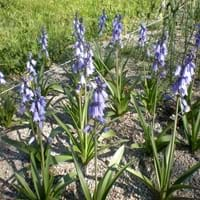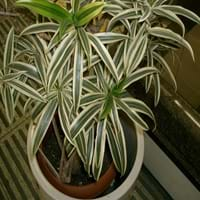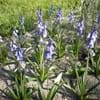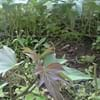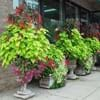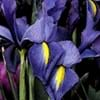Life Span
Perennial
Perennial
Type
Bulb or Corm or Tuber
Broadleaf Evergreen
Origin
Southern Europe, Western Europe, Northern Africa
Madagascar
Types
Hyacinthoides flahaultiana, Hyacinthoides mauritanica, Hyacinthoides reverchonii
Not Available
Habitat
Parks, wastelands, Waysides, Woodland edges
Tropical Indian Ocean Islands
USDA Hardiness Zone
4-10
10-15
Habit
Clump-Forming
Upright/Erect
Minimum Height
Not Available
Minimum Width
Not Available
Flower Color
White, Blue, Pink, Blue Violet
White, Green
Flower Color Modifier
Bicolor
Bicolor
Fruit Color
Not Available
Not Available
Leaf Color in Spring
Green
Green, Dark Green
Leaf Color in Summer
Light Green
Green, Dark Green
Leaf Color in Fall
Several shades of Green
Green, Dark Green
Leaf Color in Winter
Light Green
Green, Dark Green
Leaf Shape
Narrow
Lanceolate
Plant Season
Spring
Spring, Summer, Fall, Winter
Sunlight
Partial Sun, Partial shade
Partial Sun, Partial shade
Growth Rate
Medium
Not Available
Type of Soil
Loam
Loam, Sand
The pH of Soil
Acidic, Neutral
Acidic, Neutral
Soil Drainage
Well drained
Well drained
Bloom Time
Spring, Late Spring
Indeterminate
Tolerances
Drought
Not Available
Where to Plant?
Ground
Container, Ground, Pot
How to Plant?
By dividing rhizomes, tubers, From bulbs, Seedlings
stem tip cuttings
Plant Maintenance
Medium
Medium
Watering Requirements
Average Water Needs, Do Not over Water, Requires regular watering
Average Water Needs, Do Not over Water
In Summer
Lots of watering
Lots of watering
In Spring
Moderate
Moderate
In Winter
Average Water
Average Water
Soil pH
Acidic, Neutral
Acidic, Neutral
Soil Type
Loam
Loam, Sand
Soil Drainage Capacity
Well drained
Well drained
Sun Exposure
Partial Sun, Partial shade
Partial Sun, Partial shade
Pruning
Pinch Tips, Remove damaged leaves, Remove dead branches, Remove dead leaves, Remove dead or diseased plant parts
Remove damaged leaves
Fertilizers
High amounts of nutrients, organic fertlizers
10-10-10 diluted liquid fertilizer
Pests and Diseases
Red blotch
Flecking, Fluoride toxicity, Fusarium leaf spot
Plant Tolerance
Drought
Drought
Flowers
Yes
Insignificant
Flower Petal Number
Single
Single
Foliage Texture
Medium
Medium
Foliage Sheen
Glossy
Glossy
Attracts
Birds, Butterflies, pollinators
Bugs, Mealybugs, Spider Mites
Allergy
Pollen
no allergic reactions
Aesthetic Uses
Showy Purposes
Beautification
Beauty Benefits
Not Available
Not Available
Environmental Uses
Air purification
Air purification
Medicinal Uses
Not Available
Antipyretic, Diarrhea, Dysentry, Dysmenorrhea, Hemostatic, Malaria
Part of Plant Used
Flowers
Bark, Leaves
Other Uses
Beneficial species for attracting pollinators, Decoration Purposes, Showy Purposes, Used for Landscaping
Used to make herbal teas
Used As Indoor Plant
No
Yes
Used As Outdoor Plant
Yes
Yes
Garden Design
Container, Cutflower, Mixed Border, Rock Garden / Wall, Wildflower
Container, Feature Plant, Houseplant, Screening, Wind Break, Tropical
Botanical Name
HYACINTHOIDES hispanica
DRACAENA reflexa
Common Name
Spanish Bluebell
Pleomele, Song-of-India
In Hindi
Bluebell plant
Song-of-India
In German
Endymion Pflanze
Song-of-India
In French
plante Bluebell
Song- of- Inde
In Spanish
planta Bluebell
Song- de - la India
In Greek
φυτό Bluebell
Τραγούδι - του -Ινδίας
In Portuguese
planta Bluebell
Canção -da-Índia
In Polish
Bluebell roślin
Song- of- Indie
In Latin
Bluebell herba
Song of India :
Phylum
Magnoliophyta
Magnoliophyta
Class
Liliopsida
Lilopsida
Family
Liliaceae
Agavaceae
Genus
Hyacinthoides
Dracaena
Clade
Angiosperms, Monocots
Angiosperms, Monocots
Tribe
Hyacintheae
Not Available
Subfamily
Scilloideae
Nolinoideae
Number of Species
Not Available
Difference Between Bluebell and Song-of-India
If you are confused whether Bluebell or Song-of-India are same, here are some features about those plants to help you choose better. Many people think that these two plants have the same characteristics, but one can see Bluebell and Song-of-India Information and learn more about it. Fertilizers required for proper growth of Bluebell are High amounts of nutrients and organic fertlizers, whereas for Song-of-India fertilizers required are 10-10-10 diluted liquid fertilizer. Hence, one should know the basic difference between Bluebell and Song-of-India if you are planning to have them in your garden to enhance its beauty.
<
Flowering PlantsImportance of Bluebell and Song-of-India
Want to have the most appropriate plant for your garden? You might want to know the importance of Bluebell and Song-of-India. Basically, these two plants vary in many aspects. Compare Bluebell and Song-of-India as they differ in many characteristics such as their life, care, benefits, facts, etc. Every gardener must at least have the slightest clue about the plants he wants to plant in his garden. Compare their benefits, which differ in many ways like facts and uses. The medicinal use of Bluebell is Not Available whereas of Song-of-India is Antipyretic, Diarrhea, Dysentry, Dysmenorrhea, Hemostatic and Malaria. Bluebell has beauty benefits as follows: Not Available while Song-of-India has beauty benefits as follows: Not Available.
Compare Facts of Bluebell vs Song-of-India
How to choose the best garden plant for your garden depending upon its facts? Here garden plant comparison will help you to solve this query. Compare the facts of Bluebell vs Song-of-India and know which one to choose. As garden plants have benefits and other uses, allergy is also a major drawback of plants for some people. Allergic reactions of Bluebell are Pollen whereas of Song-of-India have no allergic reactions respectively. Having a fruit bearing plant in your garden can be a plus point of your garden. Bluebell has no showy fruits and Song-of-India has no showy fruits. Also Bluebell is flowering and Song-of-India is not flowering . You can compare Bluebell and Song-of-India facts and facts of other plants too.
